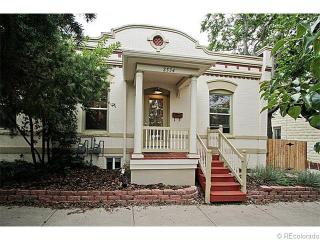Jefferson Park includes part of the original Congressional grant of 1860, and part of the incorporated Town of Highlands which was annexed to Denver in 1896. General William H. Larimer waded the Platte River on December 11, 1858, and platted the Town of Highland. When Denver City and Auraria merged in 1861, Highland was included in the merger, and thereafter was known as North Denver.
The Rocky Mountain Brewery was started in Jefferson Park by John Good in 1859. Philip Zang joined the business in 1869 and eventually purchased the brewery and renamed it the Zang Brewery. Part of the original building still stands on the east side of 7th and Water Streets as the Luxerest Manufacturing Company.
The Town of Highlands was intended to be an elite suburb, a residential community with the men earning their living in Denver and retiring in the evening to Highland. Highlanders were a very proud people, proud of their pure air, pure water (artesian), fine homes, good schools and high morals. Highlands was a blue-law town at a time when Denver was known coast to coast for its gambling, prostitution, and racy life.
The town was made up of 35 subdivisions with the street names, directions and lot sizes not conforming to the city norm. As a general rule, building was permitted on 25 foot lots, and some builders would put up a row of small gothic cottages, built very close together, and surrounded by acres of vacant lots. Any block, in Jefferson Park today, may have houses representing the architecture of the 1890s, the 1910s, 1920s and ’40s, and 50s. After the building boom that occurred following the end of World War II, there was very little vacant property left in North Denver.
The largest influx of residents came in the 1890s with the immigration of Irish, Germans and English. The Chicano in-migration did not start until after World War II.
Jefferson Park received its name from the 6.7 acre park located on West 23rd Avenue and Clay Street. This old city dump was filled, seeded and landscaped in the early 1900s and named after the father of the Democratic Party, Thomas Jefferson. This was in reaction to the naming of Washington Park in south Denver for George Washington.



